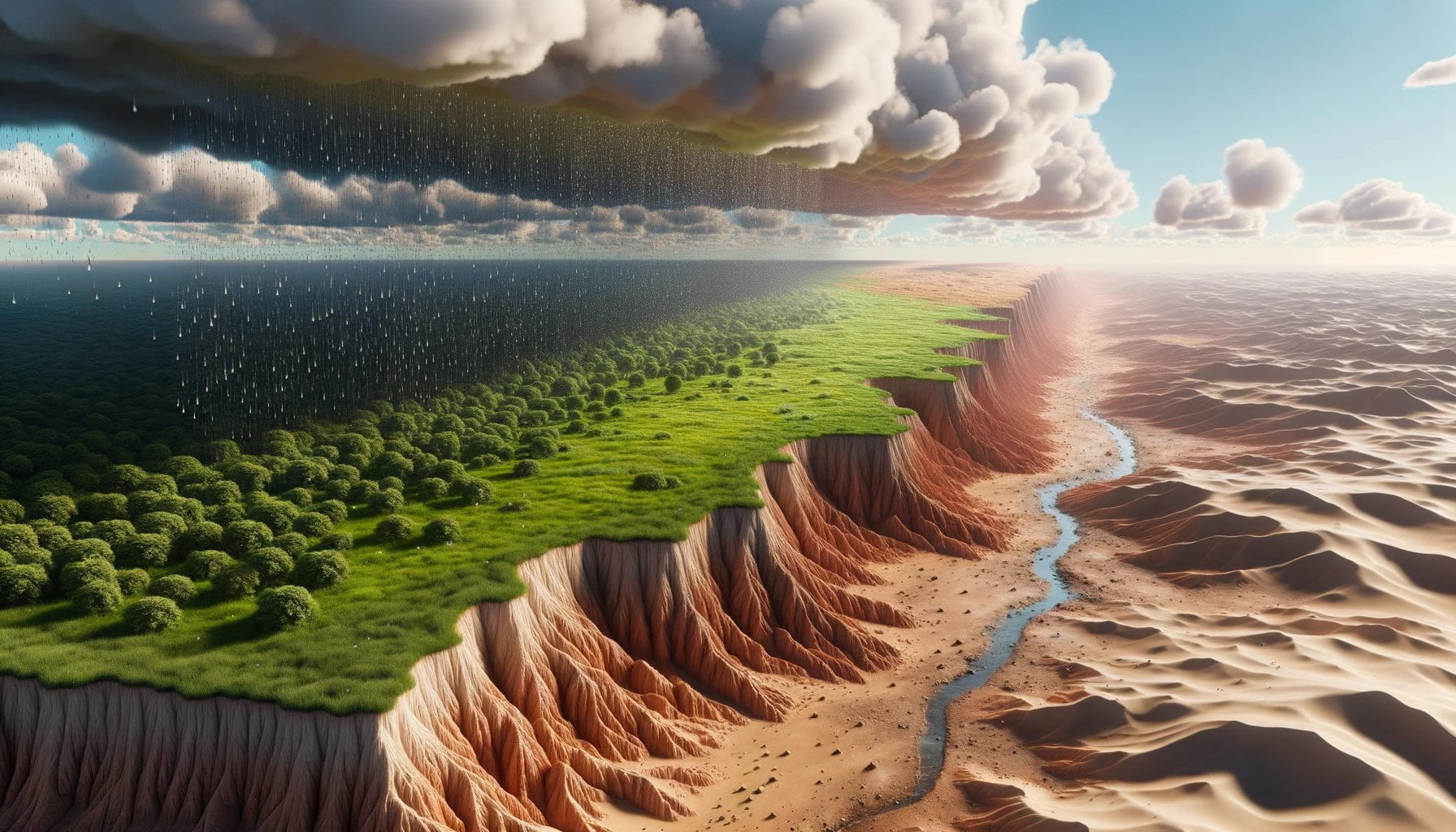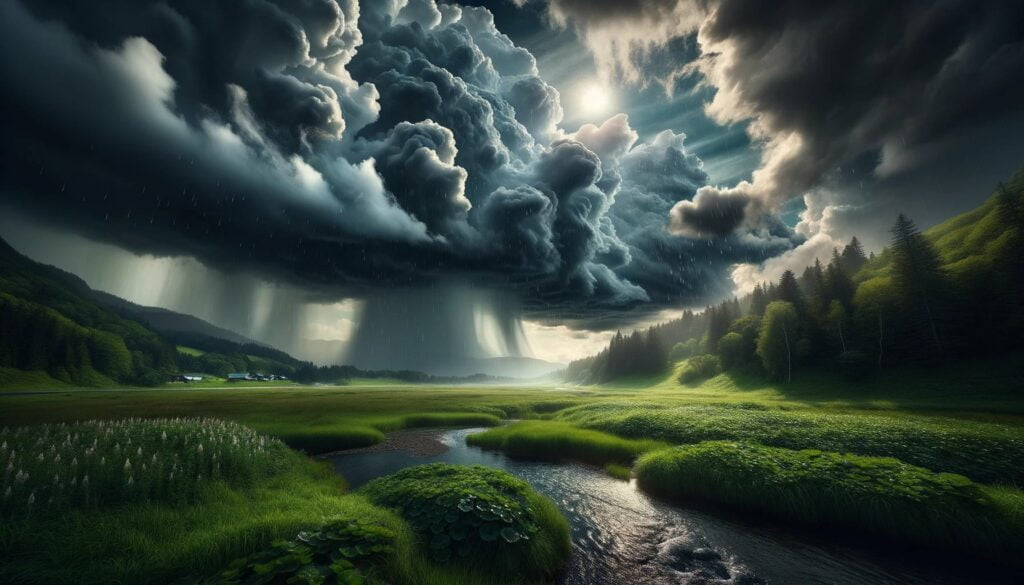Rain, a fundamental aspect of our planet’s water cycle, is a mesmerizing natural phenomenon that has captivated scientists and curious minds for centuries. But have you ever wondered how rain actually forms? In this article, we will delve into the intricate process of precipitation, unraveling the secrets behind those magnificent raindrops that fall from the sky. From the initial condensation of water vapor to the crucial role of atmospheric instability, join us as we embark on a journey to demystify the captivating process of precipitation. Whether you’re an expert in meteorology or simply a curious reader, this article will provide you with a comprehensive understanding of what happens in the atmosphere when rain is about to grace our planet. So let’s grab our metaphorical umbrellas and dive into the extraordinary world of precipitation!
What is the process of precipitation?
Precipitation, also known as rain or snow, is a fascinating natural phenomenon that plays a crucial role in the water cycle. But have you ever wondered how rain forms and what factors contribute to this process? In this article, we will delve into the intricate process of precipitation and uncover the secrets behind this essential element of our weather system.
Understanding the Basics of Precipitation
To comprehend the process of precipitation, we must first grasp the fundamentals. Precipitation occurs when water vapor in the atmosphere condenses and transforms into larger droplets or ice crystals. These droplets or crystals then fall to the Earth’s surface in the form of rain, snow, sleet, or hail. Essentially, precipitation provides nature’s way of replenishing the Earth’s freshwater resources.
The Factors Influencing Precipitation
Now that we know the basic concept of precipitation, let’s explore the factors that influence its formation and characteristics. Temperature, humidity, and atmospheric conditions all play significant roles in determining the type and intensity of precipitation. The temperature of the cloud and the air between the cloud and the ground are particularly crucial in determining whether we experience rain or snow.
The Rain-Making Process
Imagine a warm, sunny day, and you notice fluffy white clouds forming in the sky. These clouds, known as cumulus clouds, are the starting point of the rain-making process. As the sun heats the Earth’s surface, warm air rises and carries moisture with it. This air mass rises, cools down through adiabatic cooling, and reaches its dew point, causing the air to become saturated.
When the air becomes saturated, tiny water droplets form around particles, such as dust or salt, in the cloud. As these droplets collide and merge, they grow larger and heavier. Eventually, they become too heavy to remain suspended in the cloud and fall to the ground as raindrops.
From Snowflakes to Precipitation
But what happens if the temperature is colder higher up in the atmosphere? In this case, the water droplets freeze into ice crystals instead of remaining as liquid droplets. These ice crystals continue to grow by attracting additional water vapor, creating intricate snowflakes.
As snowflakes descend, they may encounter a layer of warmer air. This causes the snowflakes to partially melt and become raindrops. However, if the layer of warm air is shallow, the raindrops may refreeze and reach the surface as sleet or freezing rain.
The Water Cycle and Precipitation
The process of precipitation is an integral part of the Earth’s water cycle, which involves the constant movement and transformation of water between the Earth’s surface, the atmosphere, and back again. Precipitation replenishes the Earth’s water supply by providing fresh water for drinking, bathing, and irrigating crops. After falling to the ground as snow or rain, the water eventually evaporates and rises back into the atmosphere, ready to initiate the process once more.
Conclusion
Understanding the process of precipitation gives us valuable insights into the complexities of our weather system. From the formation of clouds to the moment rain or snow reaches the ground, several factors come into play, including temperature, humidity, and atmospheric conditions. By unraveling the secrets behind precipitation, we gain a deeper appreciation for this natural phenomenon that is vital for sustaining life on Earth. So the next time you witness raindrops falling from the sky, pause for a moment and marvel at the intricacy of nature’s water cycle in action.
The water cycle is a fascinating phenomenon that encompasses various processes, one of which is precipitation. Precipitation is an integral part of the water cycle, where condensed water vapor falls from the atmosphere in the form of rain, snow, sleet, or hail. Understanding the intricacies of precipitation and its role in the water cycle is crucial in comprehending the overall dynamics of our planet’s hydrological system. To delve deeper into the process of precipitation and its significance, click here.
Stages of Precipitation
The world around us is full of fascinating natural phenomena, and one of the most captivating processes is precipitation. Whether it’s gentle rain, fluffy snowflakes, or a thick fog, precipitation plays a crucial role in our environment. In this article, we will delve into the stages of precipitation and unravel the intricate process by which rain forms.
Understanding the Basics
Before we take a closer look at the stages of precipitation, let’s start with the basics. Precipitation occurs when water vapor in the atmosphere condenses into clouds and eventually falls to the Earth’s surface as rain, snow, sleet, or hail. It is a fundamental part of the water cycle, replenishing our freshwater resources and sustaining life as we know it.
Factors Influencing Precipitation
To better understand the stages of precipitation, it’s important to consider the factors that influence it. Temperature, humidity levels, and atmospheric conditions all play significant roles in determining the type and intensity of precipitation. As warm air rises and cools down, it becomes saturated, leading to the formation of clouds and water droplets. These tiny water droplets then collide and merge, eventually becoming too heavy to remain suspended in the atmosphere, and falling to the ground as raindrops.
The Journey of Precipitation
Once precipitation falls over the land surface, it embarks on a unique journey. It can follow various paths, each with its own consequences. Let’s explore the different stages of precipitation and the paths it can take:
1. Drizzle
Drizzle is a light, fine mist of tiny water droplets that fall steadily from the clouds. It often occurs in low-lying clouds and can create a damp environment without significant accumulation.
2. Rain
Rain is the most common form of precipitation that we experience. It occurs when water droplets in the clouds grow larger through collision and coalescence, resulting in bigger raindrops that fall to the ground. Rainfall is vital for our ecosystems, replenishing water sources and supporting plant growth.
3. Fog
Fog is a type of precipitation that occurs near the ground when moist air is cooled to its dew point. It consists of tiny water droplets suspended in the air and often reduces visibility. Fog can form in various conditions, such as during the cooling of warm, humid air by contact with a cold surface or the mixing of two air masses with different temperatures.
4. Freezing Drizzle
Freezing drizzle occurs when drizzle falls to the ground and freezes upon contact with surfaces that are at or below the freezing point. This can create a thin layer of ice, making surfaces slippery and potentially hazardous.
5. Freezing Rain
Freezing rain is similar to freezing drizzle but occurs when raindrops fall and freeze upon contact with surfaces that are at or below the freezing point. Unlike freezing drizzle, freezing rain often forms thicker layers of ice, posing a greater risk of freezing on road surfaces and objects.
6. Rain and Snow Mixed
Rain and snow mixed, also known as sleet, is a combination of raindrops and ice pellets. It occurs when rain falls through a layer of subfreezing air near the surface, causing the raindrops to freeze before reaching the ground.
7. Sunshower
A sunshower is a unique meteorological phenomenon in which rain falls while the sun is shining. It occurs when rain-bearing clouds pass over an area, while the sun’s rays create a contrastingly bright sky. Sunshowers add a touch of magic to our everyday experiences.
8. Snow
Snow is precipitation in the form of ice crystals that fall from the clouds. It typically occurs when temperatures are below freezing, causing water vapor to freeze into delicate snowflakes as it falls to the ground. Snow is not just a beautiful spectacle; it also contributes to Earth’s water resources, slowly melting and providing water when temperatures rise.
The Impact of Precipitation
Understanding the stages of precipitation helps us appreciate the complexities of the weather system and the significance of water in our lives. Precipitation is vital for providing fresh water for drinking, bathing, and irrigating crops. It also helps mitigate droughts, replenish groundwater, and support various ecosystems.
The next time you encounter a rainy day or witness snowflakes gracefully descending from the sky, take a moment to consider the incredible journey that precipitation undergoes. From the formation of clouds to the unpredictable paths it may take, precipitation is a remarkable process that sustains life on Earth.
Factors Influencing Precipitation
Precipitation is a fascinating natural phenomenon that plays a crucial role in our environment. Have you ever wondered what factors affect the formation and intensity of rain, snow, sleet, or hail? In this article, we will delve into the intricate process of precipitation and explore the various factors that influence it.
1. Lifting Mechanism
To begin the process of precipitation, we need a lifting mechanism that cools the air. This cooling effect allows the water vapor in the atmosphere to condense and transform into cloud droplets. The lifting mechanism can be triggered by several factors. For example, the uneven heating of Earth’s surface, convergence of air masses, or the presence of mountains can all uplift the air, leading to the formation of clouds.
2. Condensation and Cloud Droplet Formation
Once the air cools down, the water vapor present within it begins to condense. This condensation occurs on tiny particles called “condensation nuclei,” which can be dust or smoke particles suspended in the atmosphere. These nuclei provide a surface for water vapor to cling onto, enabling the formation of cloud droplets.
3. Growth of Cloud Droplets
As more water vapor condenses and attaches to the initial cloud droplets, they grow in size and become larger and heavier. However, for precipitation to occur, these cloud droplets must grow even further, reaching a size capable of falling to the ground against the lifting force of the air. Factors such as humidity, temperature, and atmospheric conditions influence the growth of cloud droplets during this stage.
4. Atmospheric Conditions
The composition and characteristics of the atmosphere have a significant impact on precipitation. Factors such as moisture content and temperature play crucial roles in determining the type and intensity of precipitation. For example, warmer air can hold more moisture, increasing the likelihood of rain or heavy downpours. On the other hand, colder temperatures can lead to the formation of snow or freezing rain.
5. Geographical Factors
Beyond atmospheric conditions, geographical factors also come into play when it comes to precipitation. The topography and elevation of the land influence how air masses interact with the landscape. Mountains, for instance, can force air to rise, leading to the formation of clouds and enhanced precipitation on the windward side. In contrast, the leeward side of mountains may experience a rain shadow effect, resulting in reduced rainfall.
6. Global Climate Patterns
The Earth’s climate patterns, such as El Niño and La Niña, also influence precipitation on a larger scale. These climate phenomena can alter ocean temperatures, atmospheric pressure, and wind patterns, leading to significant shifts in precipitation patterns across regions. El Niño, for example, typically brings above-average rainfall to some areas, while La Niña can result in drier conditions in certain regions.
Understanding the factors that influence precipitation helps us appreciate the complexities of this natural process. From the lifting mechanisms and condensation processes to atmospheric conditions and geographical factors, each element plays a crucial role in determining when and how precipitation occurs.
Did You Know?
Raindrops are not actually shaped like teardrops. When examined closely, raindrops often resemble more of a flattened or hamburger bun shape. This is due to the air resistance experienced by the drop as it falls through the atmosphere.
To summarize, precipitation is a intricate process influenced by various factors. The lifting mechanism, condensation, growth of cloud droplets, atmospheric conditions, geographical factors, and global climate patterns all contribute to the formation and intensity of precipitation. By understanding these factors, we can gain a deeper appreciation for the role that precipitation plays in our environment and the importance of water in sustaining life.
So, the next time you feel raindrops on your skin or witness the beauty of falling snowflakes, take a moment to ponder the multitude of factors that have come together to create this mesmerizing phenomenon we call precipitation.
FAQ
Question 1
What is precipitation?
Answer 1
Precipitation is the process of transforming a dissolved substance into an insoluble solid from a super-saturated solution. In the context of weather, precipitation refers to the formation of water droplets or ice crystals in the atmosphere that fall to the earth as rain, snow, drizzle, or other forms.
Question 2
How does precipitation occur?
Answer 2
Precipitation forms in the clouds when water vapor condenses into bigger and bigger droplets of water, which then fall to the earth. If a cloud is colder, such as at higher altitudes, the water droplets may freeze to form ice. This process is a result of the condensation of water vapors in the air mass, which become saturated due to adiabatic cooling, leading to the formation of clouds and subsequent precipitation.
Question 3
What factors influence the type of precipitation?
Answer 3
The temperature of the cloud and the air between the cloud and the ground play a significant role in determining the type of precipitation. Rain is liquid precipitation that falls when temperatures are above freezing, while snow occurs when the temperatures are below freezing and the water vapor in the cloud condenses directly into ice crystals.
Question 4
Why is precipitation important?
Answer 4
Precipitation is a vital part of the water cycle, as it replenishes the earth’s water resources. When precipitation falls over the land surface, it can follow various paths, including evaporating back into the atmosphere, seeping into the ground as soil moisture or groundwater, or running off into rivers and streams. People rely on precipitation for fresh water for drinking, bathing, and irrigating crops.
Question 5
What are the factors that influence precipitation?
Answer 5
The factors that influence precipitation include a lifting mechanism to produce cooling of the air, a mechanism to produce condensation of water vapors and formation of cloud droplets, a mechanism to produce growth of cloud droplets to a size capable of falling to the ground against the lifting force of air, particles of dust or smoke in the atmosphere called “condensation nuclei,” which provide a surface for water vapor to condense upon, atmospheric conditions such as moisture content and temperature, geographical factors such as topography and elevation of the land, and global climate patterns such as El Niño and La Niña.
- Senior at What Age: Benefits & Eligibility Guide - March 29, 2025
- Unlocking Senior Benefits: How Old is a Senior? Your Complete Guide - March 29, 2025
- Master Russian Politeness:A Guide to Saying Please - March 29, 2025


















